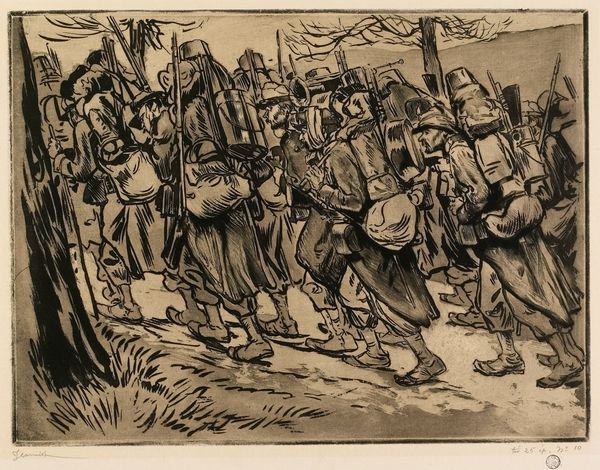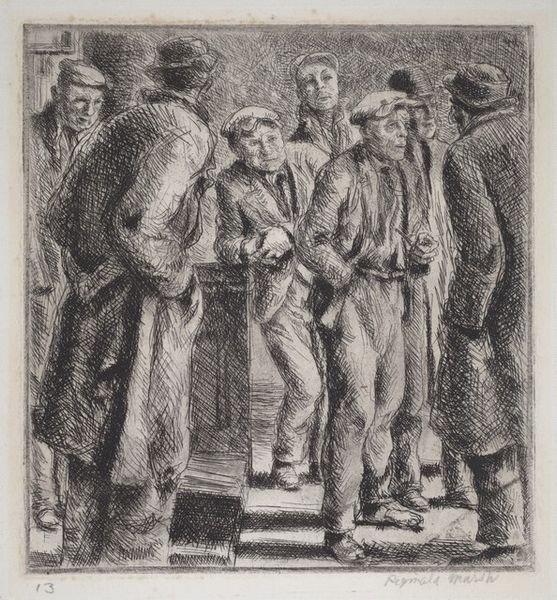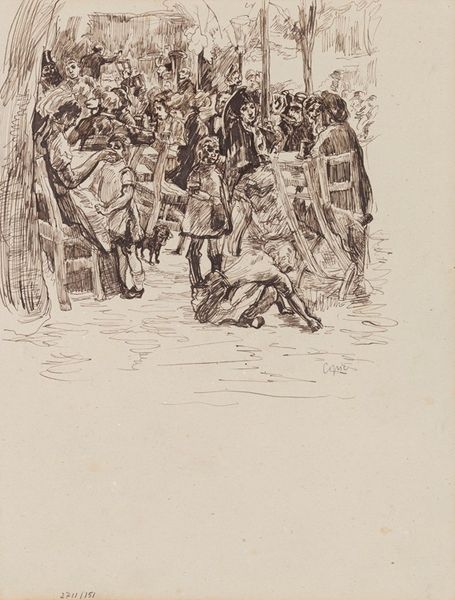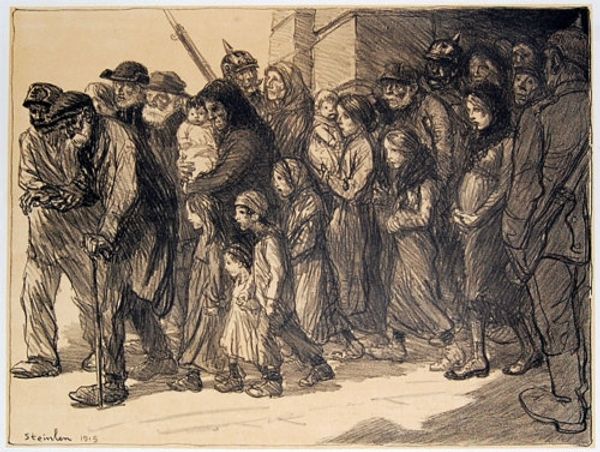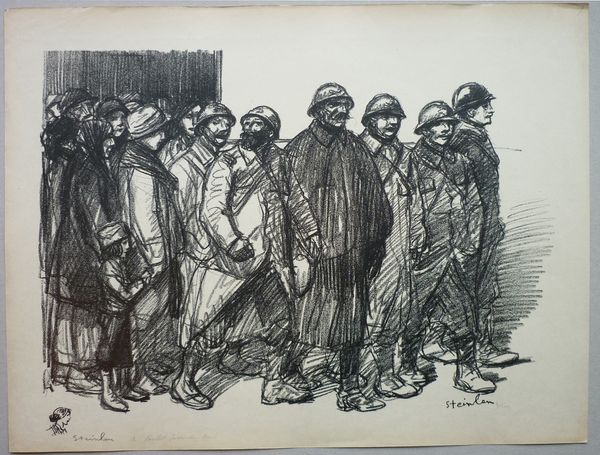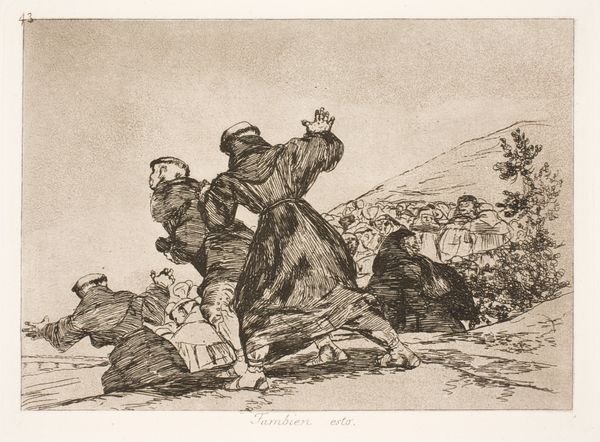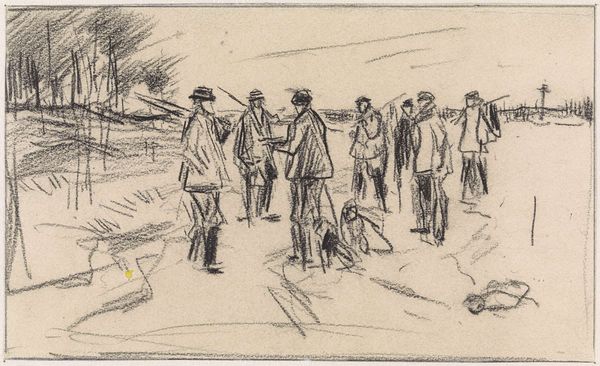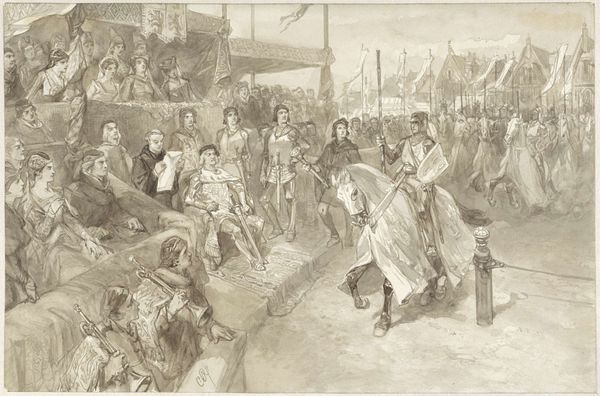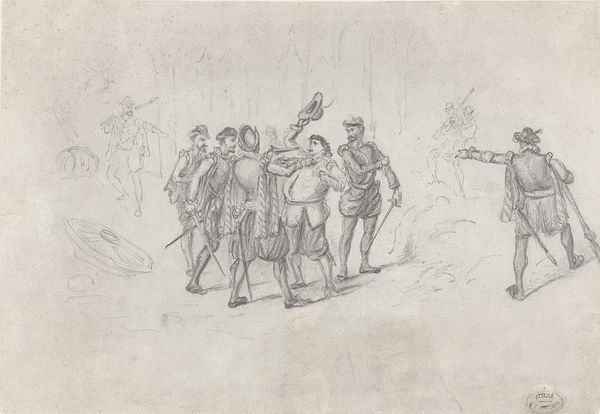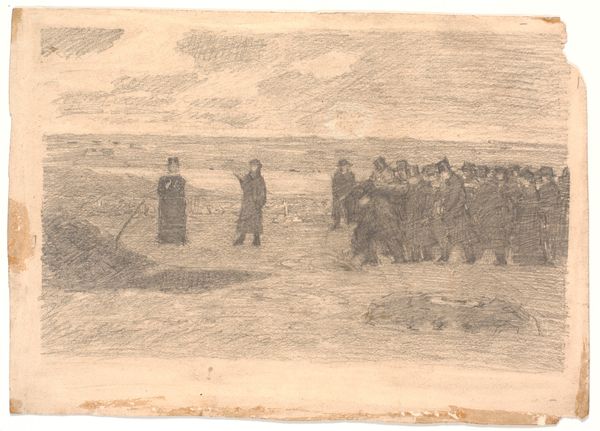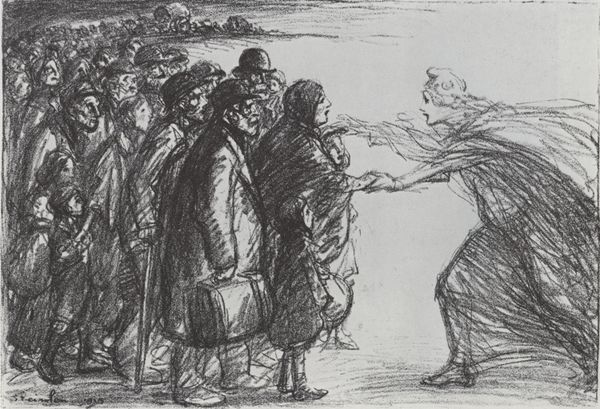
print, etching
#
narrative-art
# print
#
etching
#
german-expressionism
#
figuration
#
social-realism
#
history-painting
#
realism
Dimensions: 8 1/2 x 11 5/8 in. (21.59 x 29.53 cm) (plate)15 3/8 x 19 3/4 in. (39.05 x 50.17 cm) (sheet)
Copyright: No Copyright - United States
Curator: Kathe Kollwitz created this etching, titled "March of the Weavers," in 1897. It's currently held in the collection of the Minneapolis Institute of Art. Editor: The somber mood strikes me immediately. A dense crowd advances, their faces etched with worry or determination, under a vast, indifferent sky. It feels relentless, powerful. Curator: The print is a key example of Social Realism, reflecting the plight of the working class and drawing attention to social inequalities of the late 19th century. Kollwitz explored these themes across her oeuvre. The narrative derives from Gerhart Hauptmann's play, "The Weavers", itself based on the Silesian weavers' uprising of 1844. Editor: And look at how she depicts these weavers—tools slung over shoulders, almost weapons of labor. The recurring symbol of the axe seems so poignant: a symbol of their trade but also of a potential violence simmering beneath the surface of their misery. I see a mother carrying a child— a loaded image speaking volumes about their collective future. Curator: The play ignited public debate, with audiences divided on whether it was a condemnation of capitalist exploitation or an incitement to revolution. Kollwitz saw Hauptmann’s drama in 1893 and decided to interpret its harsh realism and political statement as a series of prints. Editor: Yes, and the use of the etching medium heightens the drama, I think. The stark blacks and whites, the heavy lines, create this incredible sense of tension. Notice how she deliberately avoids idealizing her subjects; their raw, worn faces emphasize their lived experience. It speaks directly to the immense suffering and disillusionment felt during this era. Curator: Exactly. Kollwitz sought to convey truth, not beauty, in her representation of the working class. The “Weavers’ Cycle”, of which “March of the Weavers” is a part, brought her widespread acclaim, but also stirred controversy, particularly in conservative political circles. She had planned to show it at the Great Berlin Art Exhibition in 1898 but the jury rejected the work. Editor: Even in its compositional choices—the claustrophobic arrangement, the relentless forward momentum, the figures merging into a collective mass—Kollwitz underscores their unity, their shared struggle against oppression. A dark, yet powerfully hopeful, representation. Curator: I agree. The work allows us to engage with difficult moments in social history. Editor: Ultimately, this etching makes us consider the symbolic and human cost of industrial progress.
Comments
minneapolisinstituteofart almost 2 years ago
⋮
In early 1893, Kollwitz attended a private showing of Gerhart Hauptmann's play The Weavers in Berlin. The play was based on a historical uprising of Silesian workers in 1844, in which the workers decide their lot is intolerable and rally at the mansion of their employer. He calls in the military and in the scuffle that results, a stray bullet kills an old man who had opposed the uprising. There is no easy or happy conclusion, and the play ends on this note. By basing her graphic cycle on this infamous work, Kollwitz established herself as an artist concerned with the downtrodden. The images of this cycle confront the difficult themes of poverty, infant mortality, violent rebellion, and retaliatory slaughter. The images were not intended to illustrate the play, but rather to create a parallel and self-sufficient visual text so that even those unfamiliar with the play could understand the continual struggle of the worker. Kollwitz began work on A Weavers' Rebellion in 1893, and exhibited the six images of the series five years later.
Join the conversation
Join millions of artists and users on Artera today and experience the ultimate creative platform.

